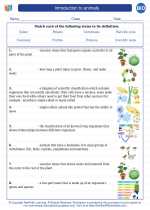What is Dioxide?
Dioxide is a chemical compound composed of two oxygen atoms bonded to another element. The most common dioxide that is often studied in biology is carbon dioxide (CO2).
Role of Carbon Dioxide in Biology
Carbon dioxide plays a vital role in cellular respiration, the process by which cells break down glucose to produce energy. During this process, carbon dioxide is produced as a waste product and is released from the cells into the bloodstream. It is then transported to the lungs, where it is exhaled from the body.
Study Guide for Dioxide in Biology
1. Chemical Structure of Carbon Dioxide
Carbon dioxide is composed of one carbon atom bonded to two oxygen atoms. The molecular formula for carbon dioxide is CO2.
2. Production in Cellular Respiration
During cellular respiration, glucose is broken down in the presence of oxygen to produce energy, carbon dioxide, and water. The chemical equation for this process is:
C6H12O6 + 6O2 → 6CO2 + 6H2O + Energy
3. Role in the Carbon Cycle
Carbon dioxide is a critical component of the carbon cycle, where it is exchanged between the atmosphere, oceans, and living organisms. Plants and phytoplankton utilize carbon dioxide during photosynthesis to produce glucose and oxygen, contributing to the balance of this compound in the environment.
4. Impact on Climate Change
Excess carbon dioxide in the atmosphere contributes to the greenhouse effect, leading to global climate change and environmental impacts. Understanding the sources, sinks, and effects of carbon dioxide is crucial in addressing climate change concerns.
5. Measurement and Monitoring
Various methods, such as gas chromatography and infrared gas analyzers, are used to measure and monitor carbon dioxide levels in the atmosphere, oceans, and biological systems. These techniques aid in scientific research and environmental management efforts.
.◂Biology Worksheets and Study Guides High School. Introduction to animals
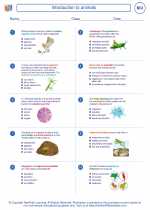
 Worksheet/Answer key
Worksheet/Answer key
 Worksheet/Answer key
Worksheet/Answer key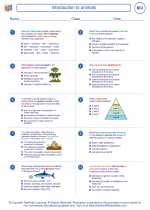
 Worksheet/Answer key
Worksheet/Answer key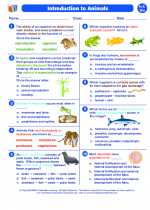
 Vocabulary/Answer key
Vocabulary/Answer key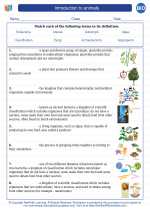
 Vocabulary/Answer key
Vocabulary/Answer key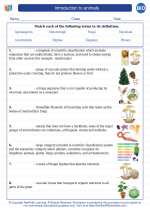
 Vocabulary/Answer key
Vocabulary/Answer key